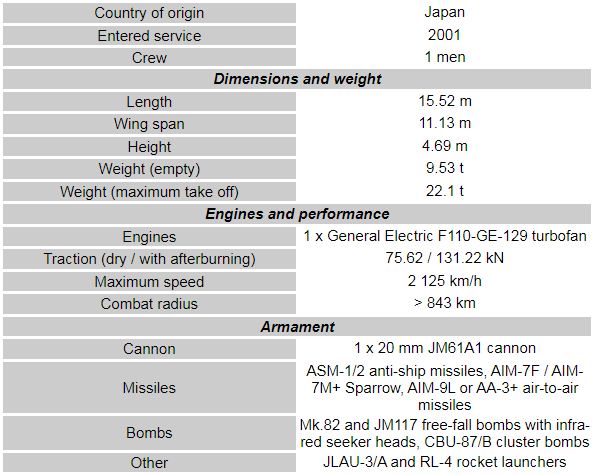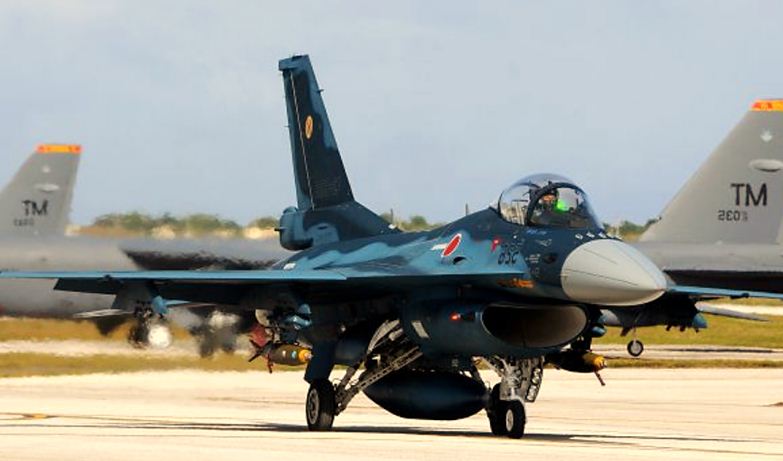 |
| Mitsubishi F-2 |
Militarymedia.net | In October 1987, Japan selected the F-16C Fighting Falcon as the basis for a more developed version to replace the Mitsubishi F-1, primarily in the fighter support role. Despite the expensive controversial advertising program - one F-2 is at least the equivalent of four Block 52/52 F-16Cs - the F-2 illustrates Japan's commitment to defending the high-tech aerospace industry.
The F-2 has a new wing with a 25 percent larger area and a co-preserved all-composite construction, with radar-absorbent material at the front. To accommodate additional mission avionics that include an integrated electronic warfare system, the F-2's fuselage has a longer forward fuselage when compared to the F-16C. Other features include a longer nose to accommodate the advanced active phased-array radar, a larger tailplane, brake lines and a reinforced canopy. The Mitsubishi F-2 is the second mass-production aircraft in the world, after the Soviet MiG-31, to be equipped with a phased-array radar.
 |
| Mitsubishi F-2 |
Mitsubishi is the prime contractor responsible for the fuselage assembly as well as the forepart manufacture, while other main assembly lines are produced by Lockheed Martin, Kawasaki and Fuji. With wingtip-mounted AIM-9 Sidewinder or Mitsubishi AAM-3 air-to-air missiles, the F-2 still has 11 hardpoints available to other stores, including the ASM-2 anti-ship missile as one of the primary weapons. . The F-2 program has experienced long delays, increased costs and a number of structural problems including wing cracks and severe flapping. Four prototypes have been built consisting of two single-seat XF-2A and a pair of two-seat XF-2B.
 |
| Mitsubishi F-2 |
The first XF-2A made its maiden flight on 7 October 1995. In late 1995 the Japanese government approved a program for the manufacture of 130 aircraft with entry into service schedule for 1999. Delays due to modifications to address structural problems delayed the F-2's entry into operational service until the year 1999. 2001. The current production program requires the production of 83 single-seater F-2A and 47 two-seater F-2B. Maintaining full combat capability, it has a reduced fuel capacity of 685 liters. The F-2B will be used for conversion and proficiency training, replacing the Mitsubishi T-2.
 |
| Mitsubishi F-2 |









